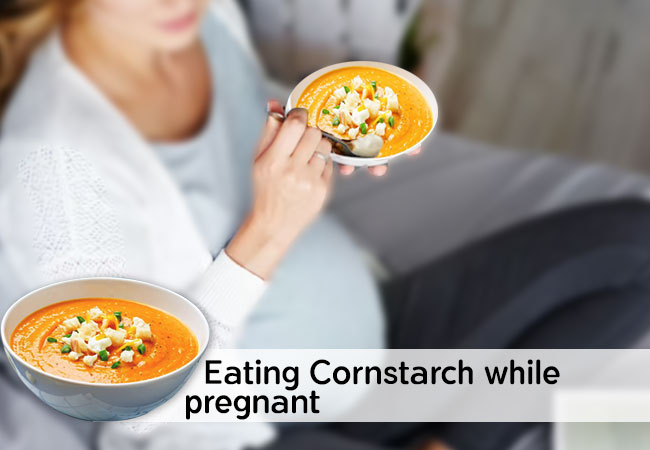Why Do Females Eat Corn Starch While Pregnant?

Introduction
Corn starch consumption during pregnancy refers to the practice where some pregnant women crave and consume corn starch. This phenomenon, although unusual, is an important topic of discussion due to the potential health implications it has for both the expectant mother and the developing fetus. Understanding why some pregnant women eat corn starch can help in providing appropriate medical advice and interventions.
Types and Categories
Forms of Corn Starch:
Corn starch is available in various forms, including:
- Powder Form: The most common form consumed directly.
- In Foods: Found as an ingredient in processed foods and as a thickening agent in recipes.
Types of Consumption:
- Direct Consumption: Eating raw corn starch directly from the package.
- Indirect Consumption: Consuming foods that contain corn starch as an ingredient.
Symptoms and Signs
Common Cravings:
Pregnant women experiencing pica, a condition characterized by cravings for non-nutritive substances, may develop a desire to eat corn starch. This craving can vary in intensity and frequency.
Physical Effects:
- Digestive Issues: Consuming large amounts of corn starch can lead to digestive problems such as constipation or blockages.
- Nutritional Deficiencies: Relying on corn starch can displace nutrient-dense foods, leading to deficiencies in vital nutrients.
Psychological Signs:
- Emotional State: Stress, anxiety, and hormonal changes during pregnancy can influence cravings.
- Behavioral Patterns: Persistent cravings for non-food substances may indicate underlying psychological conditions.
Causes and Risk Factors
Biological Factors:
- Nutritional Deficiencies: Iron and zinc deficiencies are commonly linked to pica and cravings for substances like corn starch.
- Hormonal Changes: Pregnancy hormones can alter taste preferences and cravings.
Environmental Factors:
- Cultural Influences: In some cultures, consuming non-food substances during pregnancy is considered normal or even beneficial.
- Accessibility: Easy access to corn starch can make it a convenient option for satisfying cravings.
Lifestyle Factors:
- Dietary Habits: Poor diet lacking essential nutrients can lead to cravings for non-nutritive substances.
- Habits and Practices: Previous habits of consuming non-food items may continue into pregnancy.
Diagnosis and Tests
Pica Diagnosis:
Healthcare professionals diagnose pica through:
- Patient History: Detailed questioning about dietary habits and cravings.
- Physical Examination: Checking for signs of nutritional deficiencies or digestive issues.
Nutritional Deficiency Tests:
- Blood Tests: To identify deficiencies in iron, zinc, and other essential nutrients.
- Urine Tests: Occasionally used to check for signs of malnutrition.
Psychological Evaluation:
- Mental Health Assessment: To determine if there are underlying psychological issues contributing to pica.
- Behavioral Analysis: Understanding the patterns and triggers of cravings.
Treatment Options
Medical Treatments:
- Supplements: Iron and zinc supplements to address deficiencies.
- Dietary Changes: Incorporating nutrient-rich foods to eliminate the need for non-food substances.
Therapies:
- Cognitive-Behavioral Therapy (CBT): To address the psychological aspects of pica.
- Nutritional Counseling: Providing guidance on healthy eating habits.
Lifestyle Adjustments:
- Healthy Diet Plans: Creating balanced meal plans to ensure adequate nutrient intake.
- Craving Management: Finding safe and healthy alternatives to satisfy cravings.
Preventive Measures
Nutritional Guidance:
- Balanced Diet: Ensuring a diet rich in vitamins and minerals to prevent deficiencies.
- Prenatal Vitamins: Regular intake of prenatal vitamins to support overall health.
Prenatal Care:
- Regular Check-Ups: Monitoring the health of the mother and fetus throughout pregnancy.
- Screenings: Regular screenings for nutritional deficiencies and pica symptoms.
Education:
- Awareness Programs: Educating pregnant women about the risks of consuming non-food substances.
- Support Groups: Providing support and information through prenatal classes and groups.
Personal Stories or Case Studies
Real-Life Implications:
- Case Study 1: A pregnant woman’s journey with corn starch cravings and how it affected her health.
- Case Study 2: The impact of corn starch consumption on a baby’s development.
Health Outcomes:
- Positive Outcomes: How timely interventions helped in overcoming corn starch cravings.
- Negative Outcomes: Potential complications arising from unchecked corn starch consumption.
Expert Insights
Medical Professionals:
- Jane Smith, OB/GYN: “Corn starch cravings are often linked to nutritional deficiencies. Addressing these deficiencies is crucial for both maternal and fetal health.”
- Nutritionist John Doe: “Incorporating a variety of nutrient-dense foods can significantly reduce the urge to consume non-nutritive substances.”
Psychologists:
- Emily Brown: “Understanding the psychological triggers behind pica can help in developing effective treatment plans.”
Conclusion
Summary of Key Points:
- Understanding Cravings: Recognizing the biological, environmental, and psychological factors behind corn starch cravings.
- Health Implications: Highlighting the potential risks and health impacts of consuming corn starch during pregnancy.
- Preventive Measures and Treatments: Emphasizing the importance of a balanced diet, prenatal care, and addressing psychological factors.
Call to Action:
- Further Education: Encouraging pregnant women to seek medical advice if they experience unusual cravings.
- Professional Consultation: Recommending regular consultations with healthcare providers to ensure a healthy pregnancy.
By addressing the underlying causes and ensuring proper medical guidance, pregnant women can overcome unusual cravings and maintain a healthy pregnancy. Always consult a healthcare professional if you have any concerns about your diet or cravings during pregnancy.


